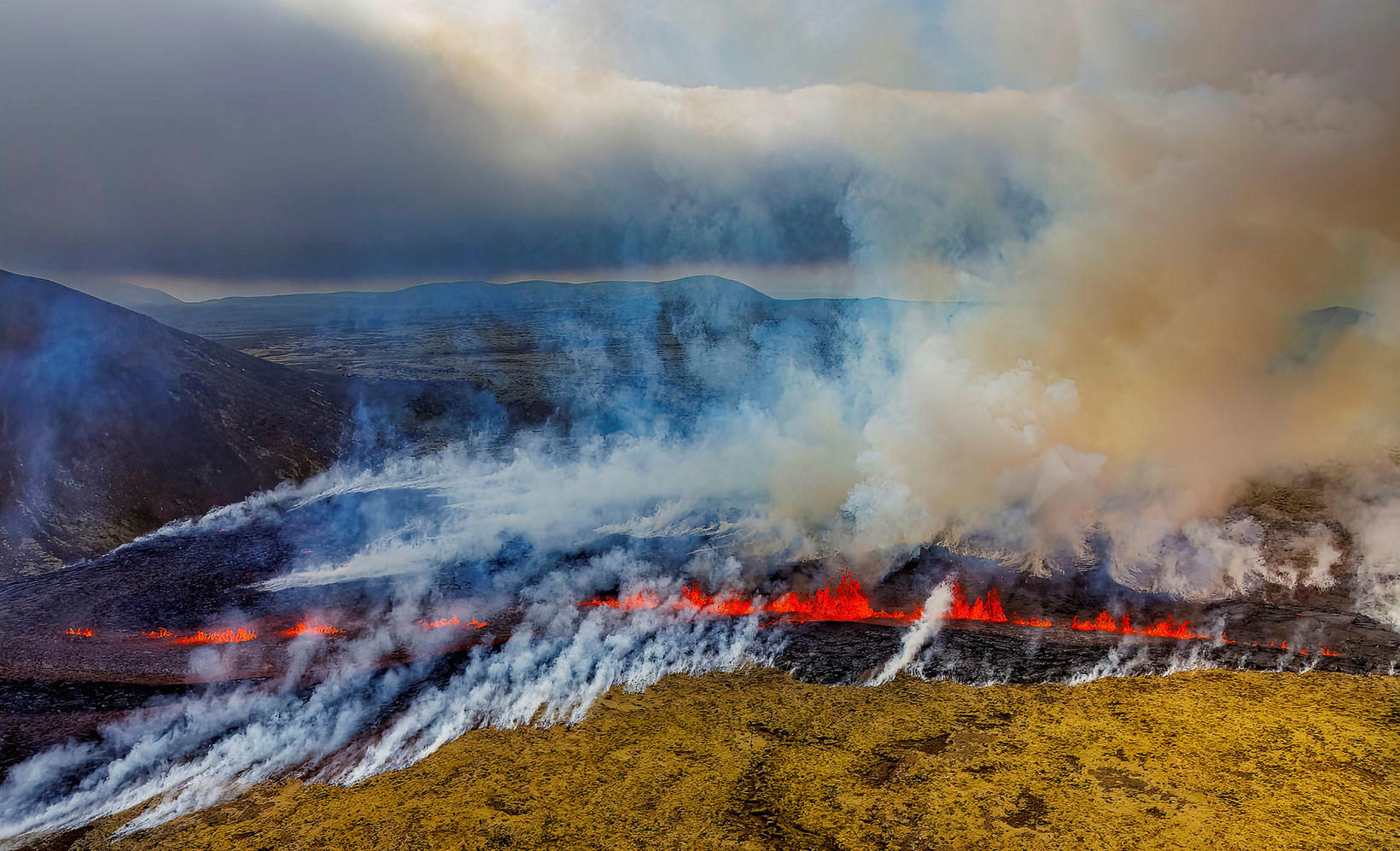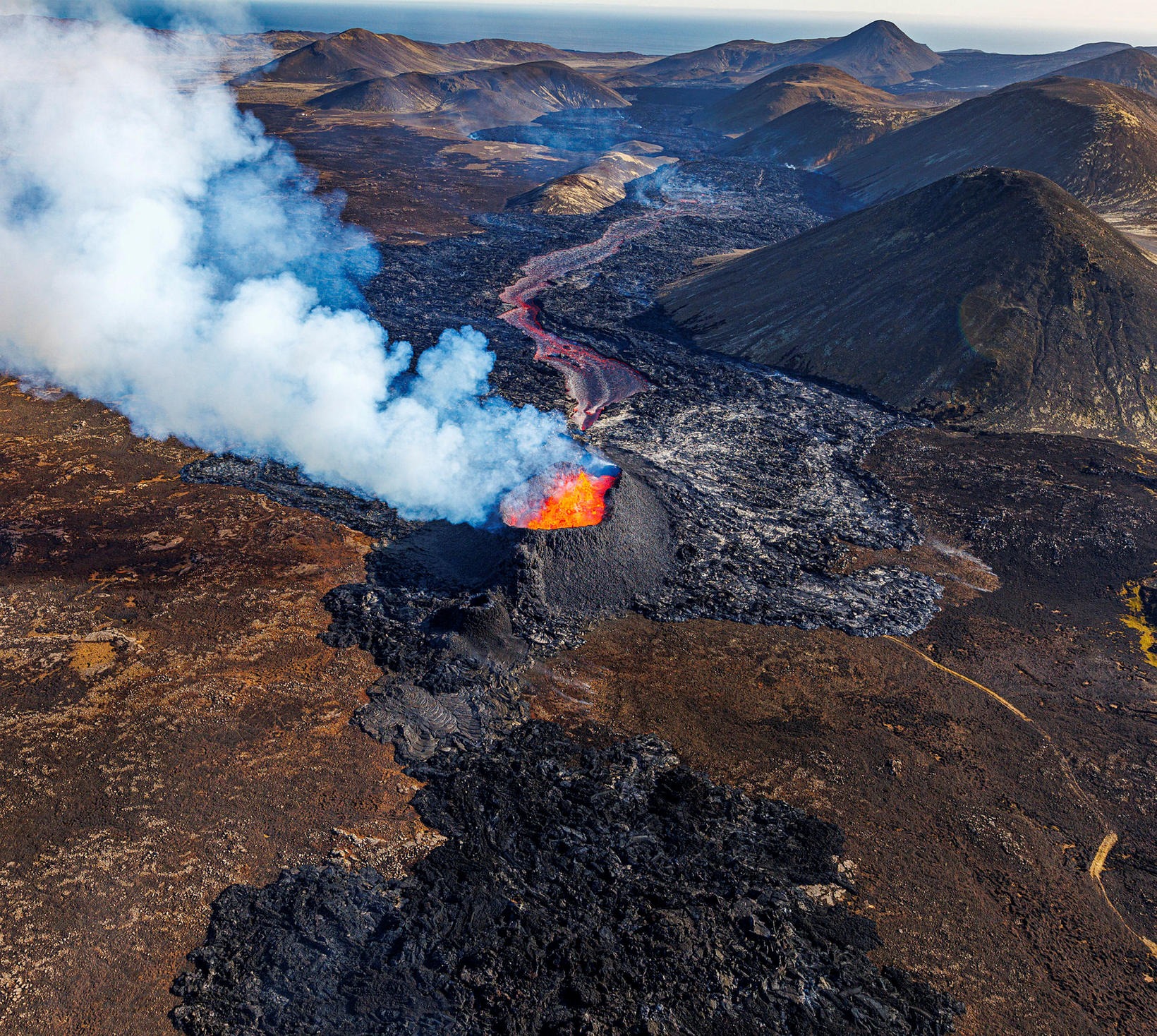The eruption this year was around one third larger than last year's
The results of the size and volume of the lava flow that occurred on Reykjanes peninsula this summer are now available.
The lava field has a total area of 1.5 square kilometres and a volume of 15.5 million cubic metres.
Earth scientists at the University of Iceland are basing this assessment on images taken from the Pleiades satellite on August 20, or about 15 days after the eruption.
Measurements taken on July 31 also reveal that lava flow during the last days of the eruption was very low, or on average 0.7 cubic metres per second from that date until the eruption’s end on August 5.
The average thickness of the lava is estimated to be ten metres. The highest thickness outside the crater is northeast of Litli-Hrútur, 28-30 metres, but the lava is also 24 metres thick in the jeart of thevalley which filled east ofKistufell and in the northeast-corner of Meradalir.
A view over the area in July. The development of the last two eruptions in this area are different from the first eruption in Fagradalsfjall in 2021. mbl.is/Árni Sæberg
Total volume of lava from the three eruptions
“The eruption at Litla-Hrút lasted 26 days. In terms of size and behaviour, it was very similar to the eruption in August 2022. The beginning of the eruption this summer was rather more powerful than in 2022, but as it was, it gradually decreased until it completely disappeared after noon on August 5,” the website of the Institute of Earth Sciences says.
Murmurs at Skjaldbreið mountain and unrest in many places
“The lava field is 3.7 km long and extended the longest distance from the crater, in the eastern Meradalir valley. This is very similar to the eruption in 2021, but this similarity is misleading when considering what conditions predated the spread of the lava field.
The Litli-Hrútur-lava flowed freely from the slope and the filling of closed valleys or depressions did not limit its progress except up to a point. The lava from 2021 was ten-fold larger in volume and had an average thickness three times more, at 30 metres. It mostly flowed into closed valleys and went far to fill them: Geldingadalur, Nátthagi and Meradalir valley.”
It is noted that magma levels in this year’s eruption are about one-third higher than in the previous eruption, but both are considered very small.
The total volume of lava from the last three years’ eruptions is estimated to be 175-180 million cubic metres.
Unlike anything else
As for the composition of the magma, it is pointed out that no significant changes have been made to the composition of the lava since the eruption at Litli-Hrútur began on July 10.
Magma that has not been seen before on the peninsula
“The lava eruption is very similar to the one that erupted in Meradalir last year, but is different from the one that occurred in Geldingadalir in the first months of 2021.”
In the past, Morgunblaðið has reported that the magma at the beginning of the first eruption in March 2021 was different from the magma that has been dominating since then. The magma that has dominated since then is different from all other lava that has been studied on the Reykjanes peninsula, and in fact most similar to the lava found in the vicinity of Askja and Veiðivötn.
“The decreased flow of homogeneous magma, as was the case at Litli-Hrútur this summer, can be explained by the emptying of a single isolated magma reservoir that does not recharge with magma from mantle. Last year’s eruption was the same, although it was rather less severe.
The development of the eruptions in 2022 and 2023 was very different from the 2021 eruption, where magma flowed directly from the mantle to the surface and magma production increased as the eruption progressed.”










/frimg/1/48/19/1481920.jpg)